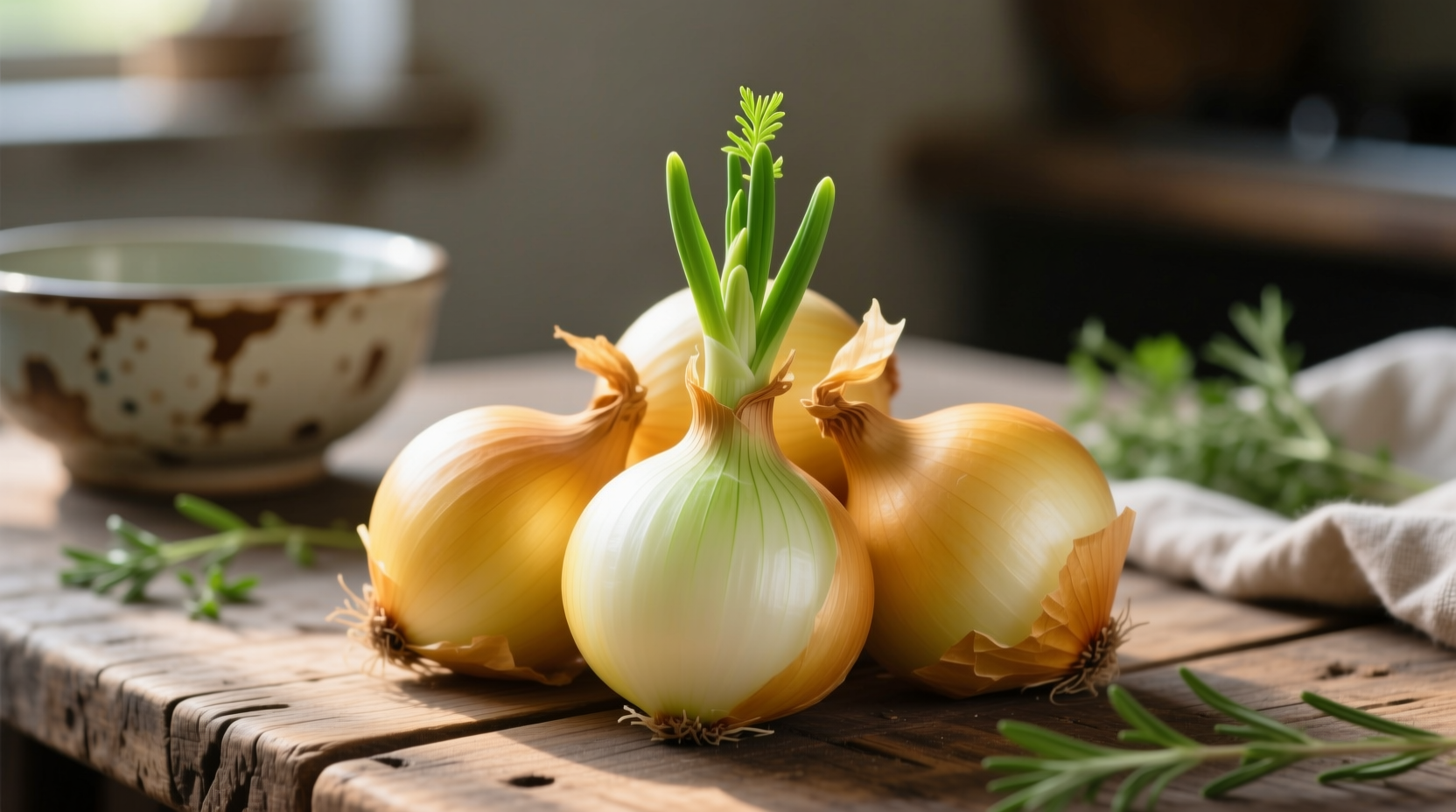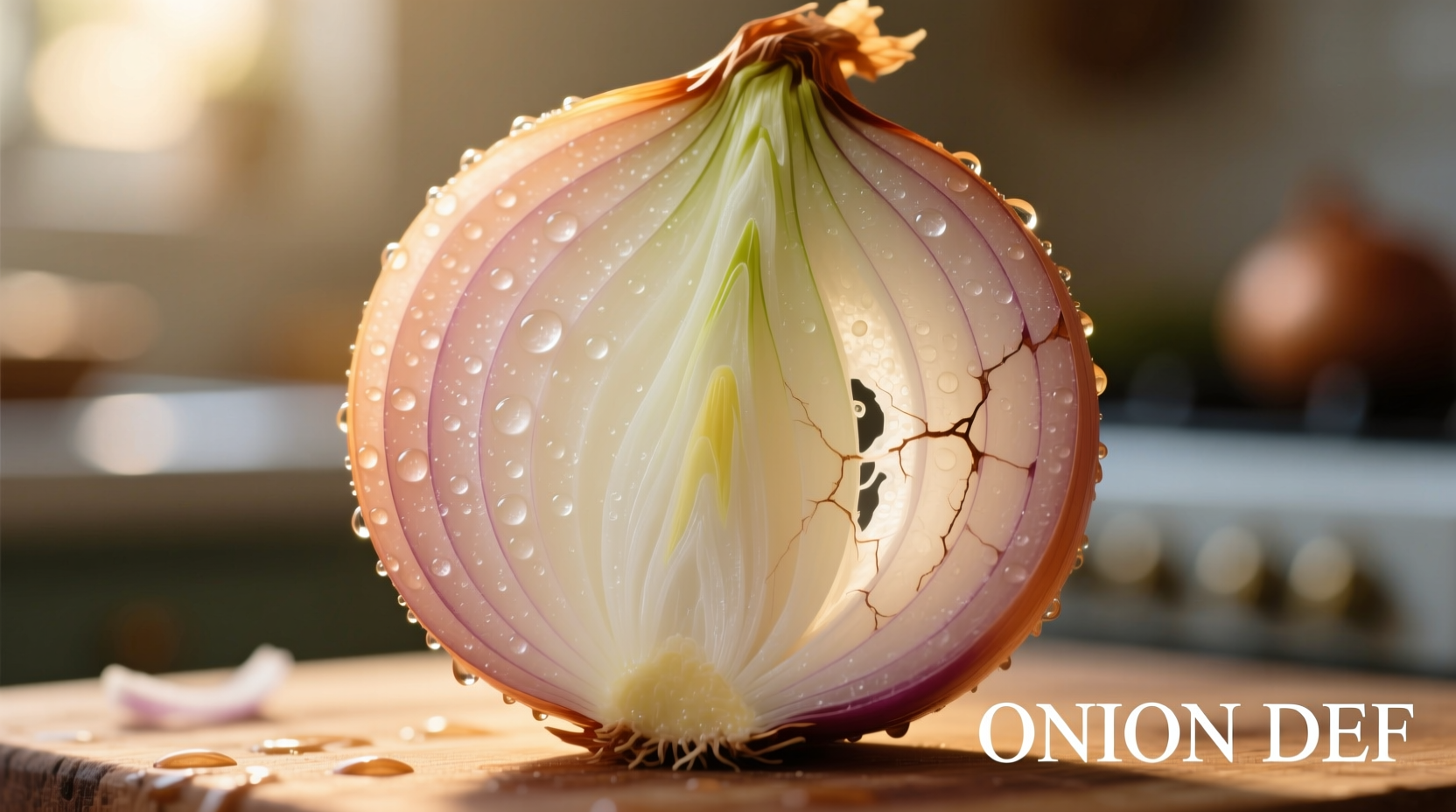Understanding what defines an onion goes beyond just recognizing this kitchen staple. Whether you're a home cook, gardening enthusiast, or simply curious about this ubiquitous vegetable, knowing the precise botanical and culinary characteristics of onions helps you select, store, and use them effectively. This comprehensive guide covers everything from scientific classification to practical kitchen applications.
Botanical Characteristics of Onions
Onions belong to the Allium cepa species within the Amaryllidaceae family. Their distinctive layered structure develops as the plant stores energy in its bulb, creating concentric fleshy scales surrounded by a protective dry outer skin. The characteristic pungency comes from sulfur-containing compounds called alkyl cysteine sulfoxides, which convert to volatile thiosulfinates when cells are damaged during cutting.
Unlike some vegetables that are harvested young, onions reach maturity when the above-ground foliage dies back, signaling that the bulb has fully developed its protective outer layers. This biological process creates the distinctive papery skin that helps preserve the onion during storage.
Onion Varieties Compared
| Variety | Color | Flavor Profile | Best Uses |
|---|---|---|---|
| Yellow Onions | Golden-brown skin | Strong, pungent when raw; sweet when cooked | General cooking, caramelizing, soups |
| Red Onions | Purple-red skin | Sharp, slightly sweet | Salads, salsas, pickling |
| White Onions | Pale yellow skin | Crisp, clean bite | Mexican cuisine, grilling |
| Shallots | Coppery skin | Delicate, subtle garlic notes | Vinaigrettes, sauces, fine cooking |
This comparison of common onion varieties comes from research conducted by the USDA Agricultural Research Service, which maintains comprehensive databases on vegetable characteristics and growing conditions. Understanding these differences helps home cooks select the right onion for specific culinary applications.
Nutritional Profile and Health Benefits
Onions provide significant nutritional value beyond their flavor contribution. A medium-sized onion (110g) contains approximately:
- 44 calories
- 10g carbohydrates
- 1.9g fiber
- 17% of daily vitamin C needs
- Significant amounts of B vitamins and potassium
Research from the National Onion Association confirms that onions contain quercetin, a flavonoid antioxidant with potential anti-inflammatory properties. The sulfur compounds responsible for onions' pungency also contribute to cardiovascular health benefits when consumed regularly as part of a balanced diet.

Historical Context and Global Significance
Onions have been cultivated for over 5,000 years, with archaeological evidence showing their presence in Bronze Age settlements across Asia and the Middle East. Ancient Egyptians revered onions not only as food but also as religious symbols, often including them in burial tombs. The vegetable's journey through culinary history demonstrates remarkable adaptability across diverse cultures.
According to agricultural records from Cornell University's Mann Library, onions spread along ancient trade routes from their Central Asian origins to become fundamental ingredients in virtually every global cuisine. Their ability to grow in varied climates and store well through winter months made them indispensable before modern refrigeration.
Practical Selection and Storage Guidelines
Choosing quality onions requires attention to specific characteristics. Look for bulbs that feel heavy for their size with dry, crisp outer skins. Avoid onions with soft spots, sprouting, or damp areas which indicate decay. The neck should be tight and dry - a loose neck suggests the onion is beginning to spoil.
Proper storage significantly extends onion shelf life. The University of California Cooperative Extension recommends storing onions in a cool, dark, well-ventilated space at temperatures between 45-55°F (7-13°C). Never store onions near potatoes, as potatoes release moisture and gases that accelerate onion spoilage. Whole onions can last 2-3 months under ideal conditions, while cut onions should be refrigerated and used within 7-10 days.
Common Misconceptions About Onions
Many home cooks operate under incorrect assumptions about onions that affect their culinary results. Contrary to popular belief, chilling onions before cutting doesn't prevent tears - the lachrymatory factor is released when cells are ruptured regardless of temperature. Using a sharp knife that causes less cell damage actually reduces tear production.
Another common myth suggests that sweeter onions contain more sugar. In reality, sweetness relates to sulfur compound concentration - lower sulfur varieties like Vidalia onions taste sweeter not because of higher sugar content, but because they lack the pungent compounds that mask natural sweetness.
Maximizing Flavor in Your Cooking
Understanding how heat transforms onions helps create better dishes. When raw, onions provide sharpness and crunch. As they cook, enzymatic reactions break down sulfur compounds, gradually developing complex sweetness through caramelization. For soups and stews, adding onions early builds flavor foundations, while finishing dishes with raw onions adds brightness.
Professional chefs recommend these techniques for optimal onion usage:
- For maximum sweetness: Cook slowly over medium-low heat for 30-40 minutes
- To preserve texture: Blanch sliced onions in boiling water for 30 seconds
- For sharper flavor: Use a mandoline for consistent thin slices
- To reduce aftertaste: Rinse cut onions under cold water before using raw











 浙公网安备
33010002000092号
浙公网安备
33010002000092号 浙B2-20120091-4
浙B2-20120091-4